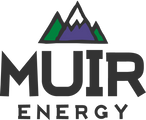Eat More, Run Stronger: Why & How You Should Be Eating for Recovery
Aug 16, 2021
BY: JACQUI LOMBARI, CERTIFIED NUTRITIONIST
EDITED BY: GEORGIA DANIELSON, MUIR EDITOR
When it comes to endurance training, sometimes following a training plan is the easy part, while actions between the hill repeats and long runs are the most impactful on our progression.
Those actions in between represent the recovery process: self-care on a performance level.
Research shows that those who optimally recover from exercise adapt to training and are less likely to sustain injury (5).
Better Recovery = Less Injury
While recovery embodies many things, proper nutrition plays a crucial role. From the moment you step off the trail, the food choices that follow make a difference in recovery.
Consider your post-exercise meal – this may be one of the more well-known instances when consuming protein and carbohydrates is essential.
But why?
Because to your body, exercise is a stressor and your metabolism, nervous system, cardiovascular system, and beyond all respond. Depending on the intensity, your nervous system switches to “fight-or-flight” mode. This switch triggers a cascade of stress hormones (like cortisol), signaling an increase in heart rate, blood flow, alertness, and focus (1). But once the workout is complete, we must signal to the body that it is time to repair.
This is where nutrition comes in.
The combination of carbohydrates and protein after exercise will drop your cortisol, replenish carbohydrate stores, stimulate muscle protein synthesis, and ultimately signal recovery (2).
PRO TIP: Plan and prioritize your post-exercise meal for better recovery.
As you plan and implement workouts, start thinking logistically about your recovery meal.
Are you headed straight to work? Can you prepare something ahead of time? Do you need to bring a small cooler to store your meal?
All these details may seem overwhelming, but ultimately, they help foster a sense of intention around your recovery.
PRO TIP: Consider your gut microbiome
One aspect of recovery that’s often overlooked is the gut microbiome.
The gut microbiome includes various bacteria--both good and bad--residing in a symbiosis in the gastrointestinal tract. The balance between good and harmful bacteria is critical, and prolonged endurance puts this balance at risk.
But how?
During exercise, blood flow moves away from the G.l. tract to working muscles instead. The lack of blood flow (and thereby lack of oxygen) creates a compromised and sensitive gut. This allows opportunistic or even pathogenic bacteria to flourish and outweigh the beneficial bacteria in your sensitive microbiome. This imbalance may lead to changes in your body composition, fatigue, sleep disturbances, and poor digestion (3).
So what should you do?
A diet full of diverse plant-based food buffers the negative effects of exercise on the gut microbiome. Whole grains, legumes, fruits, and vegetables offer fiber and phytonutrients.
According to the American Gut Project, those who consume more than 30 different plant types per week had the most robust and diverse microbiomes. This diversity translates to positive health outcomes, a resilient immune system, and a decrease in inflammation (4).
PRO TIP: Aim for a whole foods approach when it comes to recovery.
While protein bars and protein shakes are sufficient in a pinch, they miss important phytonutrients, fiber, and antioxidants. As much as you can, lean into a whole foods approach. Smoothies are a perfect way to get in all the goods. Try adding frozen, riced cauliflower or previously cooked sweet potatoes for a rich texture and a hidden vegetable source.
Final Thoughts on Recovery Nutrition
Recovery is an integral process of endurance training. It’s where your body rebuilds and integrates the information from your workouts. Intentional nutrition optimizes that recovery process. Quality protein, balanced healthy fats, sufficient fiber, and phytonutrient diversity should all be at the forefront of your nutrition plan. Paired with proper hydration, sleep, and active recovery (yoga, swimming, biking, or even walking to your local farmer’s market), your recovery will be as enjoyable as your time on the trails.
If you need an individualized nutrition plan, you may benefit from working with a nutritionist one-on-one. You can contact the team at On Pace Wellness at wilfredo@onpacewellness.com.

About the Jacqui Lombari
Jacqui is a performance nutritionist with On Pace Wellness living in Phoenix, Arizona. Her passion for sports nutrition stems from her personal experience of ultrarunning on gorgeous desert trails.
She enjoys assisting athletes with their performance and running goals through nutrition periodization, proper hydration, and efficient recovery strategies. She always looks forward to inspiring others about the power of nutrition for a long, healthy life - in and out of the running shoes.
References
- Anish, E. J. (2005). Exercise and its effects on the central nervous system. Current sports medicine reports, 4(1), 18-23.
- Beck, K. L., Thomson, J. S., Swift, R. J., & Von Hurst, P. R. (2015). Role of nutrition in performance enhancement and post exercise recovery. Open access journal of sports medicine, 6, 259.
- Clauss, M., Gérard, P., Mosca, A., & Leclerc, M. (2021). Interplay Between Exercise and Gut Microbiome in the Context of Human Health and Performance. Frontiers in Nutrition, 8.
- McDonald, D., Hyde, E., Debelius, J. W., Morton, J. T., Gonzalez, A., Ackermann, G., ... & Knight, R. (2018). American Gut: an open platform for citizen science microbiome research. Msystems, 3(3), e00031-18.
- Moore, D. R. (2015). Nutrition to support recovery from endurance exercise: optimal carbohydrate and protein replacement. Current sports medicine reports, 14(4), 294-300.
Learn More:


